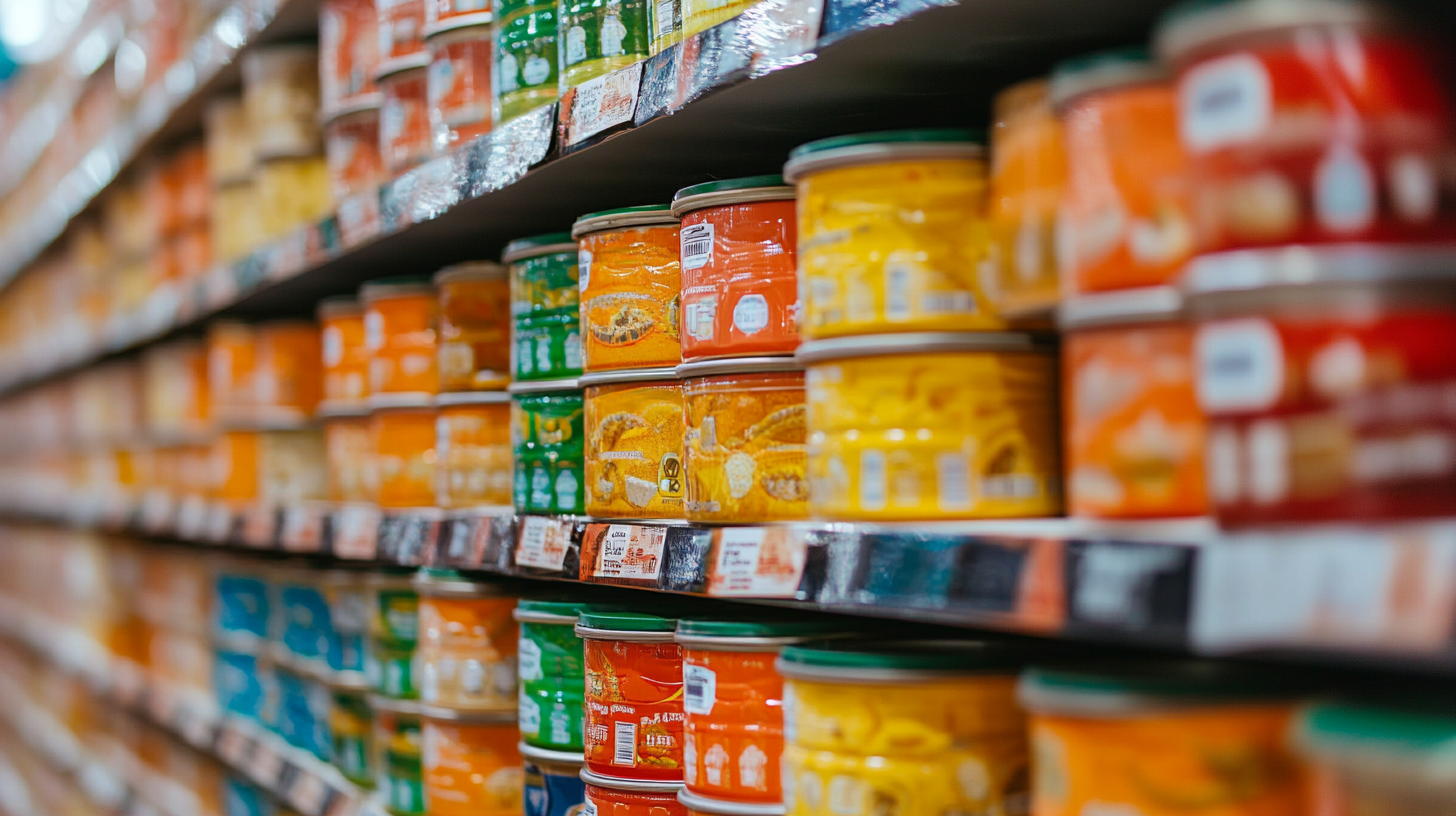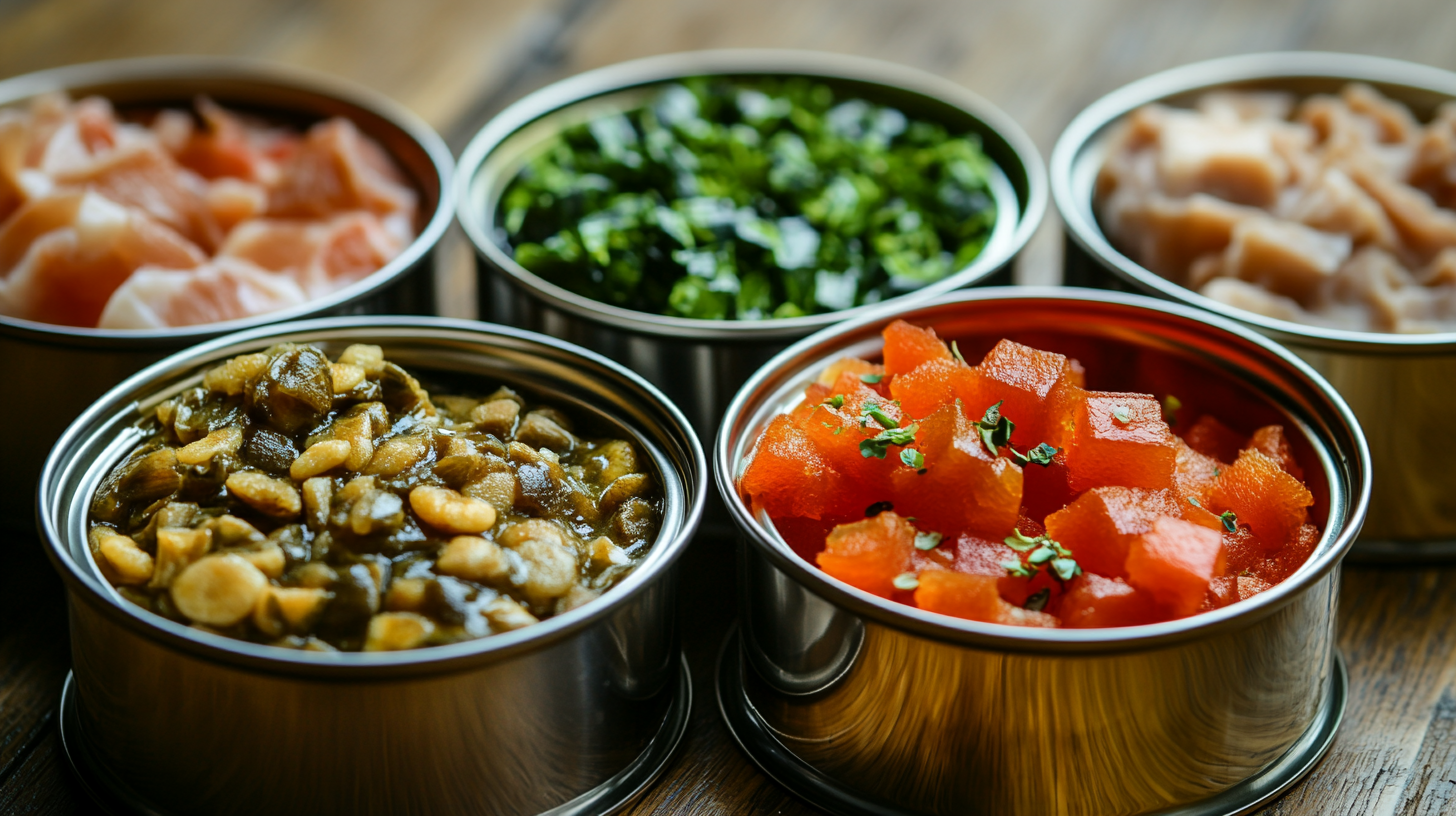When it comes to keeping our feline friends healthy and happy, the importance of quality nutrition cannot be overstated. According to the Pet Food Institute, the U.S. pet food market reached an astonishing $50 billion in 2022, highlighting the increasing demand for premium pet products, including Good Canned Cat Food. With a plethora of options available on the market, it can be overwhelming for pet owners to navigate the myriad choices and identify what truly constitutes high-quality canned cat food. Furthermore, the Association of American Feed Control Officials (AAFCO) emphasizes that pet food should meet specific nutritional standards to ensure the health and wellbeing of pets. As cat owners, understanding the essential factors that contribute to sourcing good canned cat food is crucial not only for meeting our pets' dietary needs but also for promoting longevity and vitality. This blog will delve into ten key considerations that every buyer should be aware of to make informed decisions regarding their cat's diet.

When selecting canned cat food, understanding the nutritional needs of your feline friend is paramount. Cats are obligate carnivores, which means their diet must primarily consist of meat to meet their nutritional requirements. A high-quality canned cat food should contain a substantial amount of real meat as the first ingredient, which provides essential proteins and amino acids necessary for their overall health.
In addition to protein, it’s crucial to consider the balance of fats and carbohydrates in the food. Healthy fats are important for energy and maintaining healthy skin and fur, while carbohydrates, although not as critical, should come from quality sources such as vegetables or grains. Lastly, look for canned foods fortified with vitamins and minerals that support vital bodily functions, including taurine, which is essential for heart and eye health. By focusing on these nutritional elements, you can ensure your cat receives a balanced diet that meets its specific needs.

When sourcing quality canned cat food, one of the most crucial elements to consider is the ingredient label. Analyzing these labels can reveal a lot about the nutritional value and overall quality of the food. Look for high-quality protein sources, such as real meat or fish, listed at the top of the ingredient list. Additionally, it’s essential to avoid foods that contain fillers like corn or soy, which provide little nutritional benefit. Understanding the role of various ingredients—like omega fatty acids for a healthy coat or probiotics for digestive health—can help you make informed decisions that contribute to your cat's well-being.
Recent trends in the North American pet food market highlight the importance of ingredient quality, especially with the rise of weight loss foods tailored for cats. Brands like Royal Canin, Hill's, and Purina have developed specialized wet foods that not only focus on weight management but also ensure a balanced diet. These cat foods often include fiber and other beneficial nutrients that promote satiety without compromising health. Buyers should prioritize these brands for their commitment to quality and innovation, ensuring their feline friends receive the best nutrition possible while maintaining a healthy weight.

When selecting the best canned cat food, the importance of protein sources cannot be overstated. Cats are obligate carnivores, which means their diet should be primarily composed of animal-derived protein to fulfill their nutritional needs. According to a report by the American Association of Feed Control Officials (AAFCO), protein should constitute at least 26% of a cat’s dietary intake. However, high-quality canned cat foods often feature protein levels that exceed this baseline, providing essential amino acids like taurine that support heart health, vision, and overall wellbeing.
Moreover, the source of protein plays a critical role in the digestibility and palatability of the food. A study published in the Journal of Animal Science highlights that animal proteins, such as chicken, turkey, and fish, are more bioavailable than plant-based proteins. This means that cats can utilize these animal proteins more efficiently, leading to better health outcomes. Brands that list specific animal sources at the top of their ingredients are typically more desirable. For instance, canned foods that prominently feature real meat aft the top of the ingredients list usually offer superior nutritional benefits, as indicated by the Pet Food Institute, which emphasizes the role of high-quality protein in supporting a cat's active lifestyle. Thus, when choosing canned cat food, always prioritize those with robust animal protein sources for optimal feline health.
When it comes to sourcing the best canned cat food, evaluating brand reputation is crucial. A reputable brand often indicates a commitment to quality ingredients and safe manufacturing processes. Consumers should conduct thorough research on the brand’s history, seeking out reviews and feedback from other pet owners. Long-standing brands that have consistently delivered good products tend to have a deeper understanding of pet nutrition and safety standards. Additionally, checking their presence on social media can provide insights into how they engage with their customers and respond to concerns.
Recalls are another vital factor to consider when choosing cat food. Brands that have had multiple recalls may raise red flags regarding their quality control measures. It’s important to review any reports of recalls for the specific products you are considering and to understand the reasons behind them. Transparency in handling recalls, including clear communication and efficient resolution, is a sign of a responsible manufacturer. By focusing on these aspects, buyers can make informed decisions that ensure their feline friends receive the best nutrition without undue risk.
| Factor | Description | Importance | Examples |
|---|---|---|---|
| Brand Reputation | Researching brand history, consumer feedback, and expert reviews. | High | Well-known brands with positive reviews. |
| Ingredient Quality | Type and source of ingredients used in the product. | High | Natural, high-protein ingredients. |
| Nutritional Balance | How well the diet meets the nutritional needs of cats. | High | Formulations approved by veterinary nutritionists. |
| Recalls History | Past product recalls and safety issues. | Very High | Brands with minimal recalls. |
| Manufacturing Standards | Quality control measures and certifications in place. | High | FDA or AAFCO compliance. |
| Price Point | Affordability compared to quality. | Medium | Value for the ingredients offered. |
| Customer Service | Responsiveness and help provided by the brand. | Medium | User-friendly return policies. |
| Flavor Variety | Range of flavors available for palatability. | Medium | Different meat and seafood options. |
| Sustainability Practices | Environmental impact and ethical sourcing of ingredients. | Low | Brands using sustainable fishing practices. |
| Availability | How accessible the brand is in local or online stores. | Medium | Brands with a wide distribution network. |
When selecting canned cat food, it’s crucial to consider your cat's life stage and dietary requirements. According to a recent report by CBNData, the pet consumption market in China is on the rise, with forecasted spending on cats potentially reaching up to 200,000 yuan over their lifetime. This trend underscores the importance of choosing high-quality, nutritious food that supports cats at different life stages, from kittens with high energy needs to senior cats requiring special diets to maintain their health.
A focus on fine-tuned pet health management is emerging as a significant consumer trend, indicating that owners are now more than ever prioritizing the quality of their pets’ diets. Cats require specific nutrients based on their age and health, with younger cats needing protein-rich foods to support growth, while older cats benefit from diets enhanced with fiber and lower calories. Adequate nutrition is essential not just for longevity but also for enhancing quality of life, as evidenced by the shift toward preventive nutrition strategies being adopted by many pet food brands now adhering to science-backed formulations.
